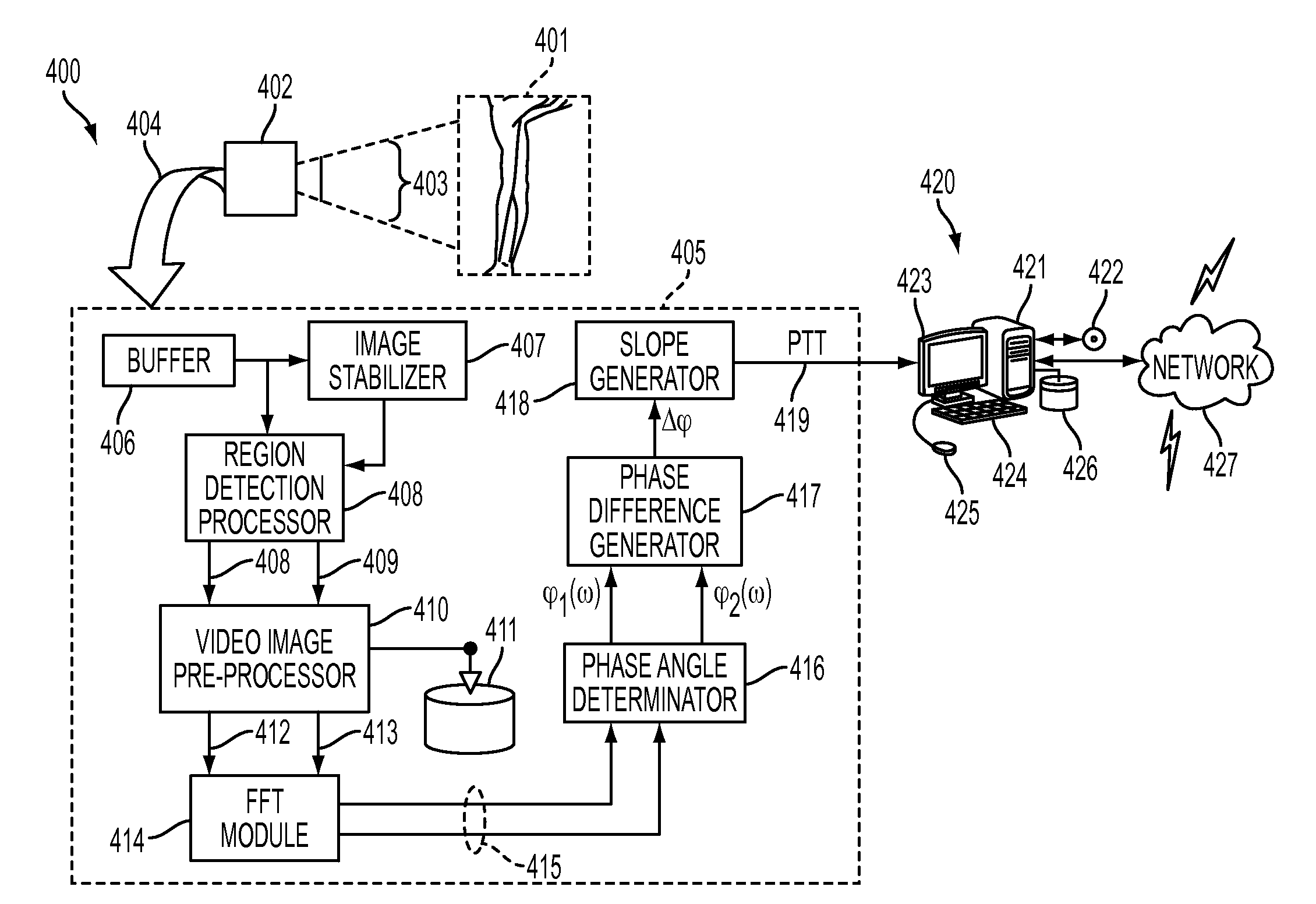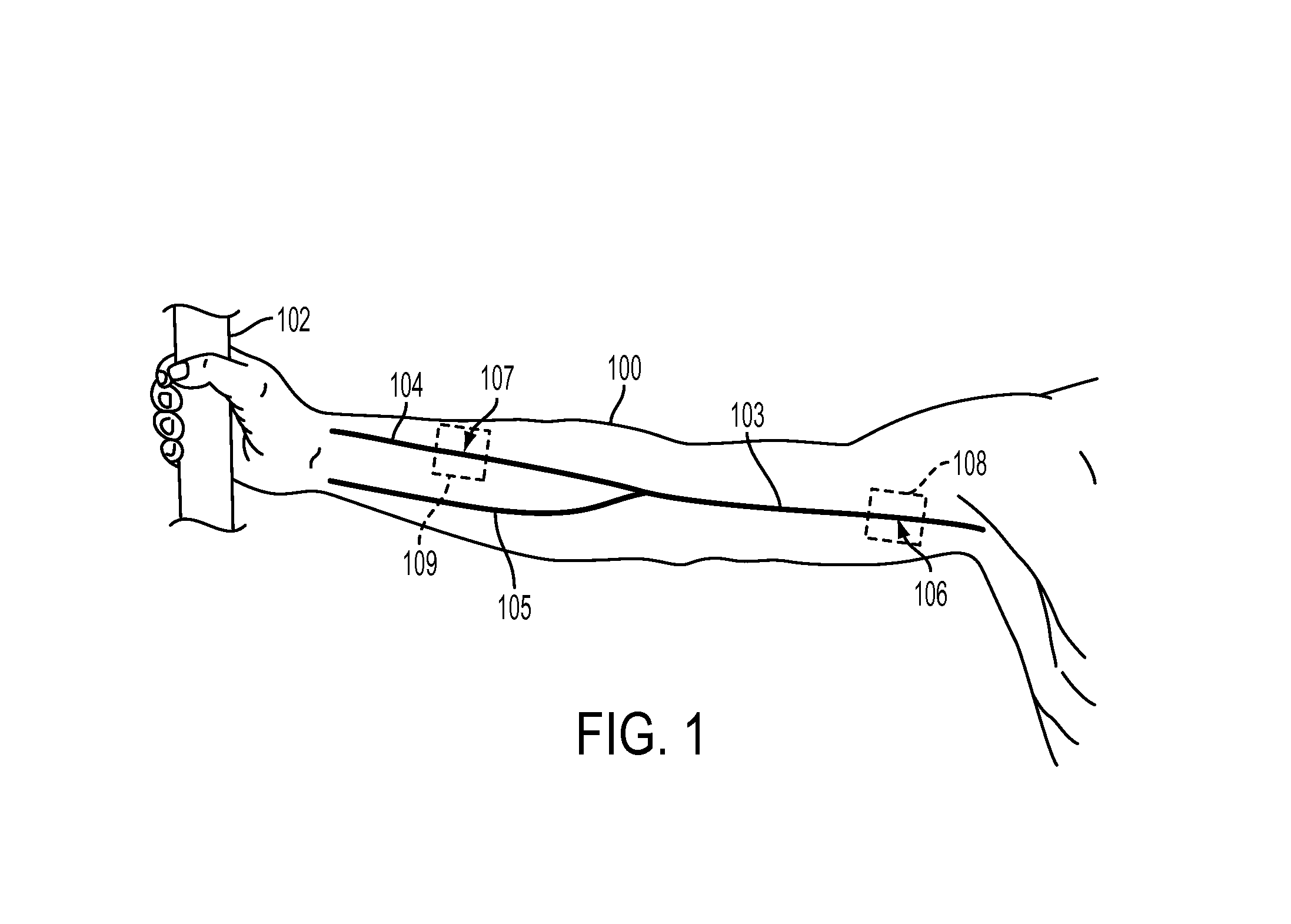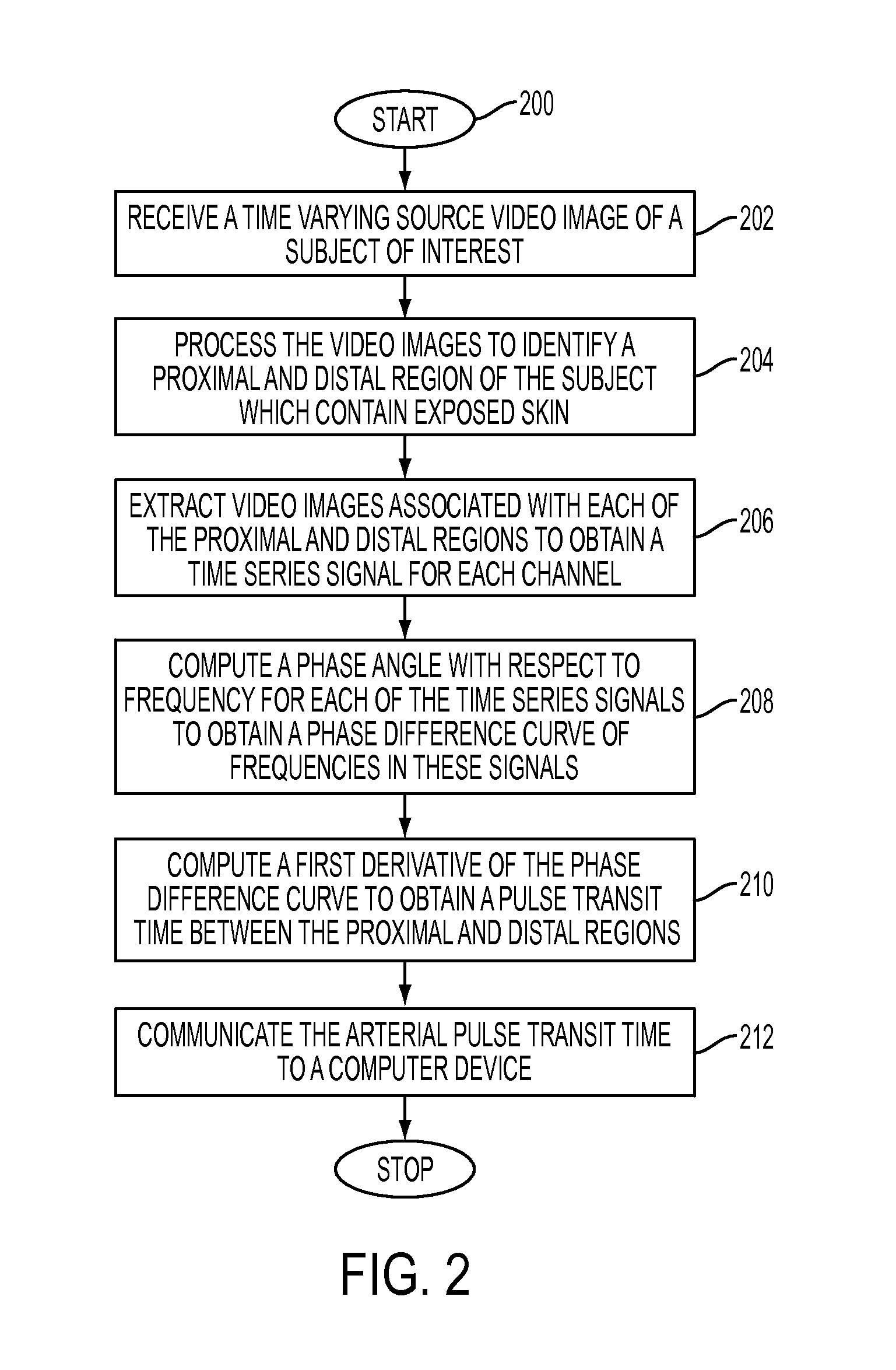Deriving arterial pulse transit time from a source video image
- Summary
- Abstract
- Description
- Claims
- Application Information
AI Technical Summary
Benefits of technology
Problems solved by technology
Method used
Image
Examples
Embodiment Construction
[0019]What is disclosed is a system and method for determining an arterial pulse transit time between a proximal and distal region of a subject of interest from source video images acquired of that subject using a video imaging system.
Non-Limiting Definitions
[0020]A “subject of interest”, as used herein, refers to any subject which is capable of registering an arterial pulse. The present method applies equally to any subjects capable of registering an arterial pulse. Use of the terms herein for explanatory purpose, such as “person” or “patient”, are not to be viewed as limiting the scope of the appended claims to human subjects.
[0021]“Proximal” (from the Latin proximus: meaning nearest to) refers to a point that is nearer to the source of the arterial pulse which is in the ascending aorta. Note that the systemic arterial system originate from the aorta. As left ventricle of the heart contracts blood exits from the ascending aorta in the form of waves and flows into systemic arteries...
PUM
 Login to View More
Login to View More Abstract
Description
Claims
Application Information
 Login to View More
Login to View More - R&D
- Intellectual Property
- Life Sciences
- Materials
- Tech Scout
- Unparalleled Data Quality
- Higher Quality Content
- 60% Fewer Hallucinations
Browse by: Latest US Patents, China's latest patents, Technical Efficacy Thesaurus, Application Domain, Technology Topic, Popular Technical Reports.
© 2025 PatSnap. All rights reserved.Legal|Privacy policy|Modern Slavery Act Transparency Statement|Sitemap|About US| Contact US: help@patsnap.com



